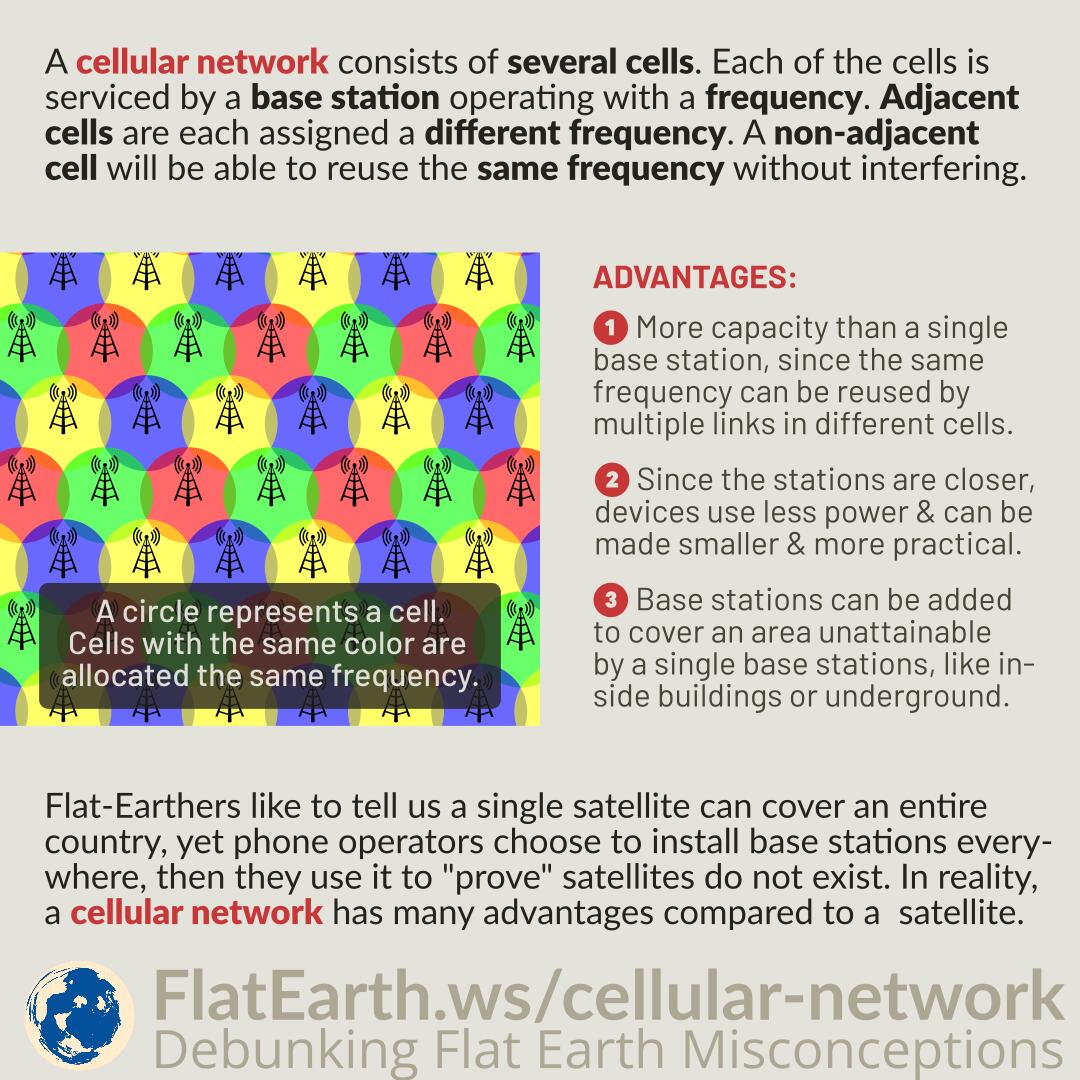A cellular network consists of several cells. Each of the cells is serviced by a base station operating with a specific frequency. Adjacent cells are each assigned a different frequency. A non-adjacent cell will be able to use the same frequency without interfering.
Flat-Earthers like to tell us that a single satellite can cover an entire country, yet phone operators choose to install base stations everywhere instead. Then they use the fact to “prove” that satellites do not exist. In reality, a cellular network has several advantages compared to one single base station, like a satellite.
Continue reading “Cellular Network vs Satellite Communications”



